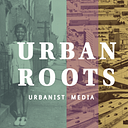Historic African American Regal Theatre to be listed in National Register of Historic Places.
By Vanessa Quirk and Deqah Hussein-Wetzel
Great news!! Last week, the Ohio Historic Preservation Board approved the Regal Theatre in Cincinnati’s West End to be listed on the National Register of Historic Places (NRHP)! Too many 20th-century buildings in historically African American communities have been lost over time, first from waves of “urban renewal” and then from cycles of disinvestment/development, but the Regal Theatre has survived — and thanks to this listing, this important center for the African American community of Greater Cincinnati will remain intact for the foreseeable future.
Thanks to the Port of Greater Cincinnati Development Authority who hired us at Urbanist Media to write the nomination for the Regal, which they plan to make the next home for the Robert O’Neal Multicultural Art Center (founded by Toilynn O’Neal Turner) in Cincinnati’s West End. Our preservation team consisted of Deqah Hussein-Wetzel (Founding Director of Urbanist Media) and Jacqueline Drayer from Mulberry History Advisors.
For our fellow preservation nerds, we nominated the building — an excellent example of a Beaux Arts-style entertainment and recreation venue — under Criterion A of the NRHP for Ethnic (Black History), entertainment, and recreation, and community planning and development as well as Criterion C for its Beaux Arts style architecture.
The theater is important for more than just its architecture, it’s significant as a place that promoted Black culture through films and entertainment acts during and after Jim Crow segregation.
What we’ve learned from residents and those with memories of the Regal is that this theatre was more than just a place for movies — it was a space where Black folks could gather, grow, and get away from the hustle and bustle of everyday life safely and affordably.
Moreover, it is one of few buildings in the West End that survived the demolition that made way for the public housing projects of the 30s and 40s and the Laurel-Richmond Renewal plan and Kenyon-Barr Redevelopment project during the 1950s and 1960s.
